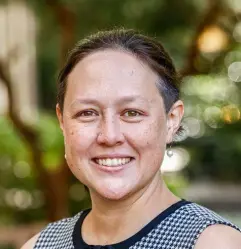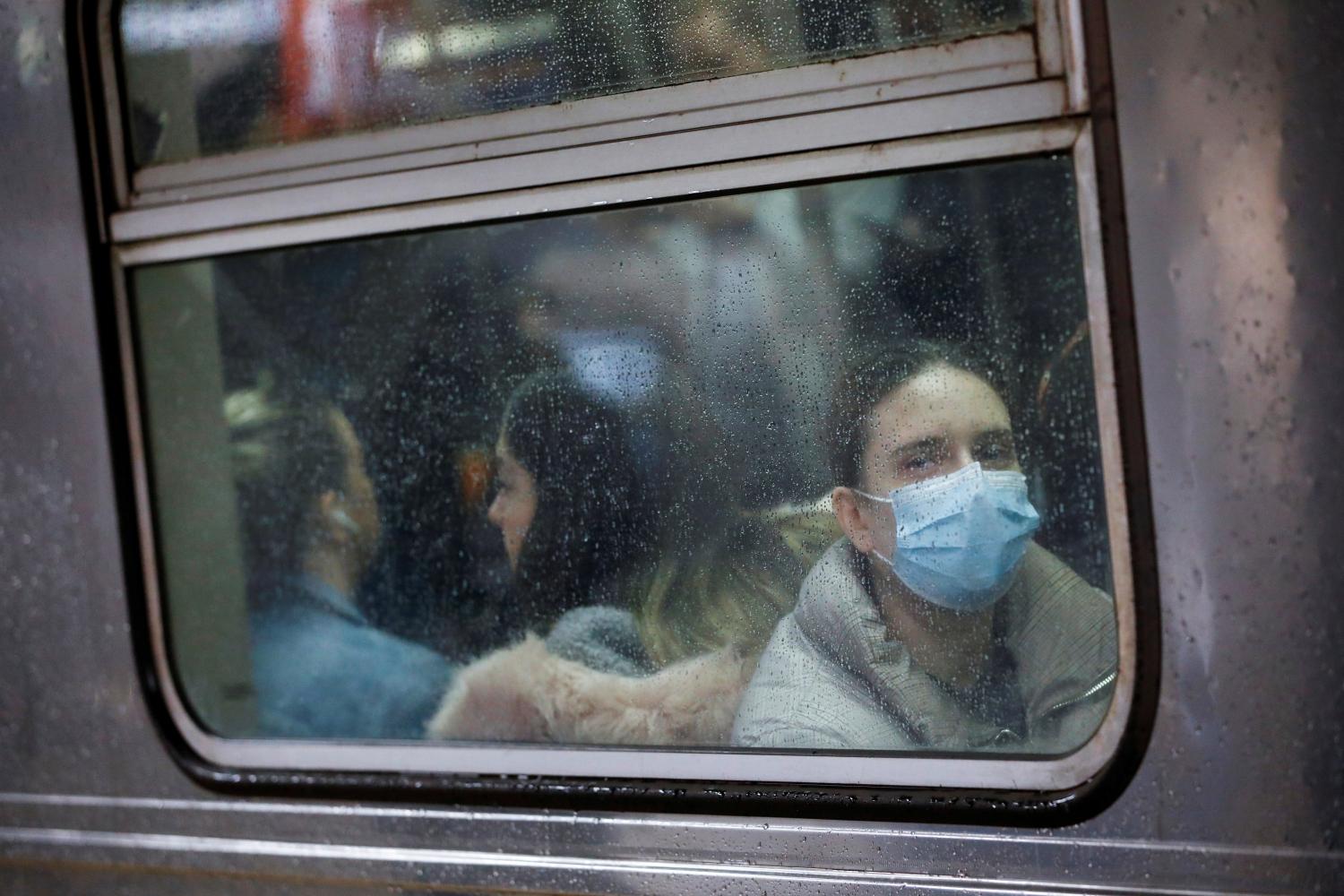This essay is part of the Actionable Ideas for Economic Recovery in American Cities, a feature of the COVID-19 Metro Recovery Watch.
Overview
This brief offers specific suggestions for how state governments can increase wealth and economic mobility for residents of structurally disadvantaged communities hit hard by COVID-19, through facilitating the creation of financial instruments that enable local ownership of real estate. These instruments would allow residents—together with other private, public, and nonprofit sector investors—to purchase and develop or redevelop land and buildings in commercial corridors. The funds would be managed by new or existing hyperlocal governance entities that represent the voice of both investors and the wider community.
Challenge
The United States has a long history of structural racism, implemented through stolen ownership, capital withholding, and community destruction. This has led to wide and growing economic disparities between people and across neighborhoods. Efforts to remedy these impacts tend to focus on job growth, education, and workforce development. However, these efforts do not address the ways in which racial discrimination leads to vast place-based inequities in access to goods and services, basic amenities, and economic opportunity.
The evidence is staggering.1 For example, residents of low-income, often predominantly minority communities have less access to major grocers than those living in higher-income neighborhoods. These residents are also more exposed to violence and environmental toxins—factors which contribute to poorer health and reduced life expectancy rates.2 They also have far fewer opportunities to build wealth; the net worth of the average white family is 10 times greater than that of the average Black family, a gap that persists regardless of income.3 These disparities are partly a result of low levels of local ownership and significant undervaluation of assets—including housing and businesses—in predominantly Black communities.4
COVID-19 has laid bare the long-term effects of discrimination and spatial segregation, with Black and Latino or Hispanic Americans bearing the brunt of the pandemic’s health and economic impacts.5 Meanwhile, commercial corridors in highly impacted neighborhoods are likely to be devastated due to lockdown measures and vandalism, as well as the fact that many minority-owned businesses have had less access to federal assistance programs ostensibly designed to keep small firms afloat.6 In the wake of the crisis, those businesses that do survive may be on precarious financial footing.
Cities and metro areas will never fully recover from the economic effects of COVID-19 without reckoning with the social and economic consequences of racist policies and practices on people and places. This demands strategies that encourage real estate investment in structurally disadvantaged communities and provide their residents the opportunity to both shape and benefit from that development.
Response
One way to directly address the challenges noted above is via real estate financing instruments that allow individuals with little income to collectively purchase and develop or redevelop land, retail, rental housing, and mixed-use properties in structurally disadvantaged communities—incrementally building wealth as those assets yield revenue over time.
Acquiring land and properties in neighborhood commercial corridors is a proven and widespread wealth creation strategy for well-capitalized private investors.7 Wall Street is already buying the nation’s Main Streets, the consequences of which can include wealth extraction and persistent vacancy.8 Communities can invert this business model into a mechanism for racial and economic justice through governance and ownership instruments that allow residents to, as Brookings’s Andre Perry puts it, “buy back the block.”9
In recent years, numerous local examples of such instruments have emerged across the country. These involve projects ranging in size from a retail shopping center in Portland, Ore. purchased by Mercy Corps’ Community Investment Trust for less than $1 million to three mixed-used buildings in Los Angeles purchased by the Nico REIT for close to $30 million.10
Existing examples of these models have been driven by the private sector, philanthropy, and local nonprofit organizations. However, such efforts could be scaled considerably with public sector support. State government agencies—e.g., departments of commerce or economic development—have a combination of power, leverage, and resources that together could be used to facilitate the creation and maintenance of these instruments in several key ways:
Supporting the right legal entities: Enabling resident investment in neighborhood real estate require entities with the knowledge and capacity to effectively design and manage nontraditional instruments.11 Emerging models suggest that states could play an important role in establishing new kinds of localized real estate trusts (with explicit social benefits built into their covenants) or approved public benefit corps with defined investment structures. Depending on the state, this may require new statutory authorities or statutory and/or regulatory reform. Such entities could be part of or affiliated with other hyperlocal governance entities (including CDCs, Main Street organizations, civic groups, or others) or otherwise structured to ensure that projects align with a community’s broader vision and goals. Without a clear orientation to social benefit, very similar-looking structures could become a toxic recipe for what Keeanga-Yamahtta Taylor calls “predatory inclusion.”12
- The Nico REIT in Los Angeles is both an approved Real Estate Investment Trust (REIT) and a public benefit corp. The public benefit parent corporation is comprised of three distinct entities: Nico Asset Management LLC, which stewards investments; Nico Property Management LLC, which oversees the buildings; and Nico Services, an interface with residents. The mixed income neighborhood trust model supported by Trust Neighborhoods in Kansas City, Mo. is set up using the Purpose Foundation’s steward-ownership model. A perpetual purpose trust by charter ensures social benefits as well as mechanisms for resident authorship of any development. In short, both of these models have built-in procedures for resident investor management and resident governance.
Entitling “portfolios” of properties: Much public policy around development is handled in a one-off way, with agencies overseeing development undertaking entitlement processes on a building-by-building or project-by-project basis. This approach limits the potential for achieving the dual objectives of neighborhood stabilization and wealth building for residents. Accomplishing both requires contiguous or proximate properties to be used differently—some for preserving affordability and some for generating revenue. Although it would generally require legal or statutory reform, a process for entitling a collection of properties would help states to deliver both community benefit and greater profitability for residents and outside investors.
- If the Nico REIT in Los Angeles or mixed income neighborhood trust (MINT) in Kansas City were to develop a mixed-use building in a commercial district, they might be required to limit profit-generating commercial activity in order to ensure that at least 30% of the property is affordable rental housing. But what if they were allowed to include only 10% affordable housing while submitting a second property nearby that was 100% affordable housing as part of the same entitlement review process? In this scenario, legally imposed affordability requirements could still be met while allowing more flexibility to include commercial development.
Providing flexible or lower-cost capital: A decisive factor in any development is the cost of capital. Any public finance solution that lowers the cost of debt makes it possible for a concentrated set of projects to deliver greater community benefit for the same acceptable rate of return, or greater returns to investors for the same community benefit. Recoverable funding streams that can capitalize projects could be a game changer. For example, state funds could be made available to finance the purchase of properties and hold them in stewardship, with an understanding that ownership will be gradually transferred to nearby residents through a longer-term buy-in process. States could also establish rent-to-own plans that convert tenants’ lease payments on storefronts and rental units into equity. As the state recaptures its investment, those funds could be reinvested in other projects.
- In Kansas City, this model is being explored by the Kauffman Foundation in partnership with investors and two community groups: KC Common Good and We Grow KC. In this model, social investors agree to finance a project with the assumption that residents can gradually convert rents into equity stakes, and the social investor is slowly bought out. It is easy to imagine a state government playing the role of the time-limited social investor in such a plan.
Directly leveraging state assets, authorities, and existing programs. States can scale new real estate ownership models through direct contributions of state-owned land and buildings, support for site preparation, renovation, and infrastructure, and the use of state authority to rezone properties to unlock their value.13 Such efforts should be seen not as subsidies but rather as acts of restorative justice that mitigate past harms caused, enabled, and/or perpetuated by the state to structurally disadvantaged communities and their residents.
Furthermore, states can create synergy with projects funded via these models by giving nearby projects priority—for example, by providing bonus points in grant applications—in other state-funded programs. State tax credit reform could also explicitly incorporate community wealth building as a valued priority.
- JobsOhio, the state’s nonprofit economic development organization, maintains inventories of available sites and makes grant and loan combinations of up to $5 million to help pay for demolition, lead-based paint and asbestos abatement, remediation, site preparation, building renovation, new building construction, and new infrastructure.
- In California, Gov. Gavin Newsom issued Executive Order N-06-19, which made excess state lands available for affordable housing.
Providing template bylaws and structures: Setting up the legal structures for entities that are designed to attract and manage investments can be a daunting task. States could simplify the incorporation process and any required approvals from state regulatory bodies for leaders who want to establish trusts and other structures by collating and sharing information on legal entity formation, governance and bylaws, tax implications, and regulatory oversight and review. By providing samples and templates for these documents, states could reduce the staffing time and costs individual organizations need to expend to develop such materials on their own.
- The Securities and Exchange Commission approved the Nico neighborhood real estate investment trust in Los Angeles in December 2019. Because Nico sought to balance investment responsibility and optimal shareholder returns with a social responsibility toward neighborhood stabilization, the proposal was unorthodox and underwent heavy review. Similarly, the legal entities driving the Community Investment Trust (CIT) in Portland and the Market Creek Community Development Initial Public Offering (CD-IPO) in San Diego had to “invent” new models at great time and cost. For these models to be scalable, we need to clarify the path to their formation.
Promoting public understanding of investing: Efforts to promote financial security in low-income communities tend to focus more on growing income than assets. When asset ownership is discussed, the emphasis is on home ownership or entrepreneurship as opposed to investment in funds and trusts, which are seen as riskier. Insights drawn from behavioral economics, however, have revealed that low-income families are often quite prepared to take chances that may lead to better economic circumstances.14 Moreover, fractional ownership plans may provide a more tolerable level of risk and accessible entry point than the outright purchase of a home or business by a single household. Making this case effectively and ethically requires a serious investment in education and communication. State agencies could amplify efforts like those noted below by endorsing and disseminating curricula to working families—in turn, creating the informed investor base on which all these ideas depend.
- An illustrative example of such educational materials is the “Going from Owing to Owning” curriculum developed by Mercy Corps’ Community Investment Trust (CIT) in Portland. The CIT has also developed a “replication toolkit” that helps local community development practitioners.
“Insuring” resident investments. Finally, states can play a formal role in mitigating risk by backing these real estate financing instruments with loan loss reserves or other mechanisms that compensate low-income residents if investments decrease in value or return over the course of a preset time frame. In this way, working families can benefit from the upside of property value increase or project revenues while being protected from losses.
- Using Section 3(a)(2) of the Securities Act of 1933, the attorneys for Mercy Corps CIT (who specialize in credit-backed structures for bond offerings) postulated that a letter of credit from a bank could provide investors with both liquidity and an appropriate “do no harm” backstop. For the entire Plaza 122 retail center, which was purchased for a mortgage of less than $1 million, Beneficial State Bank provided a letter of credit for low-income investor losses of $150,000.
Prioritizing structurally disadvantaged communities that are reasonable investment bets
To ensure that both the wealth building and community benefit objectives of these real estate ownership models are met, states should restrict program eligibility to structurally disadvantaged communities that have demonstrated resilience, undervaluation, and measurable market strength. These “middle neighborhoods” are neither high-profile downtowns nor areas that are the most economically distressed. Such criteria might include:
- Income density (dollar per acre) relative to state median
- Median total assessed value per building square foot lower than the state median
- Stable or positive population change from 2015 to 2020
- Presence of homeowners (as a share of buildings, not overall tenure)
For example, 45 ZIP codes in Maryland have residential income density higher than the state median and median assessed value per square foot for commercial real estate parcels lower than the state median. On average, 44% of the population in these ZIP codes is Black. While they are primarily located in Prince George’s County and the Baltimore region, these criteria also prioritize some rural communities, including Chesapeake Beach, Brunswick, Maugansville, Edgewood, and Cecilton.
Notes:
For more discussion see Paul C. Brophy (ed.) “On the Edge: America’s Middle Neighborhoods” (New York: American Assembly, 2016), available online at http://middleneighborhoods.org/publications/on-the-edge/.
The Reinvestment Fund’s Market Value Analysis[1] and Social Compact’s Market Drilldown are two sources of ideas for measures of market strength that do not structurally discount low-income communities.
Funding
The basic premise of this proposal is to use relatively modest amounts of public money (either equity or borrowing power and credit) to leverage private lending and attainable amounts of equity from the neighborhoods themselves.
In the financing structure example shown below, the capital stack requires only $115,000 in equity from the nonprofit neighborhood investment vehicle, which is quite feasible even for a nonprofit of modest capacity. The capital stack also includes $230,000 in state low-interest loans, which would allow states to provide startup capital through a revolving loan fund. The single largest piece of the capital stack is a bank loan, perhaps from a bank in need of Community Reinvestment Act (CRA) credit or a community development financial institution (CDFI). This structure/requirement will naturally restrict the use of this program to investments that minimize speculation and risk for equity investors large and small. The example capital stack and pro forma illustrate how this could work in a market where retail rents are $11.25 per square foot and leverage $4.40 in private capital for every $1 of public capital. Once up and running, these engines of ownership can create wealth for neighborhood shareholders through both annual dividends and share value growth over time. The offering of community shares could remain open during the life of the project, with proceeds used to reduce the bank loan on an ongoing basis.
While not shown here, there is a clear incentive for cities and counties to join these ventures as investors as well, as benefits accrue to residents and the rehabilitation of unproductive assets has a direct positive impact on property tax revenues. Requiring an additional layer of local equity in the capital stack could either reduce the loan-to-value ratio, shift part of the state’s burden to local government, or be held in reserve to guarantee debt payments.
Finally, in the current social climate, corporations looking for material ways to commit to racial justice may also be looking for opportunities to be social investors. This could form another layer in the capital stack that further leverages any public investment.

Total cost example: A state revolving loan fund, along the same conceptual lines as Clean Water State Revolving Funds, could capitalize a few new projects each year on a rolling basis while maintaining the fund. For example, a $25 million fund could loan $750,000 per year and turn a profit within five years by only collecting 4% interest income on the fund balance and the loan.15 A larger fund could do more and bigger projects.
Potential impact
State support of real estate financing instruments as described above could yield a powerful set of impacts in structurally disadvantaged areas which are likely to be devastated by COVID-19, including:
- Building resident and community wealth. Wealth-generating asset ownership is a powerful mechanism for increasing economic mobility and financial security for individuals and families. This, in turn, strengthens the local economy by creating a positive and mutually reinforcing feedback loop between the success of local businesses and the prosperity of local households.
- Growing and retaining local businesses. Neighborhood businesses provide essential access to goods and services, create jobs, and physically revitalize commercial corridors. Models that enable local ownership of real estate would not only grow new businesses in these corridors but could keep existing businesses from closing by reducing vacancy of surrounding properties and blight, factors which can lead to reduced foot traffic and demand.
- Preserving affordability and local ownership. In traditional real estate projects, success is defined by high demand and rising rents. Real estate financing instruments such as those described here can instead preserve affordability in commercial districts by empowering resident owners to choose tenants and determine leases, while formally building in a mechanism to stabilize rents over time.
- Building capacity of local governance organizations. New or existing neighborhood investment entities can organize residents around a collective vision and goals—not only for the commercial developments in which they will invest, but for the community as a whole (e.g. for infrastructure, public spaces, health and wellness, etc.).
-
Footnotes
- See for example, Raj Chetty, Nathaniel Hendren, and Lawrence F. Katz, “The Effects of Exposure to Better Neighborhoods on Children: New Evidence from the Moving to Opportunity Experiment” American Economic Review 2016, 106(4): 855–902.
- Economic Innovation Group analysis of USDA Food Access Research Atlas data; Center for Social Disparities in Health, Building Healthy Places Network, and the Robert Wood Johnson Foundation, “How Do Neighborhood Conditions Affect Health?” (2015).
- Kriston McIntosh, Emily Moss, Ryan Nunn, and Jay Shambaugh, “Examining the Black-white wealth gap” (Washington: Brookings Institution, 2020).
- As of 2017, only 2.2% of U.S. firms with paid employees were Black-owned, while Americans made up 12.7% of the country’s population. See Andre M. Perry, Tynesia Boyea-Robinson, and David Harshbarger, “This Juneteenth, we should uplift America’s Black businesses” (Washington: Brookings, 2020). Owner-occupied homes in majority Black neighborhoods are undervalued by $48,000 per home on average compared to homes in neighborhoods with few or no Black residents. See Andre M. Perry, Jonathan Rothwell, and David Harshbarger, “The devaluation of assets in black neighborhoods: The case of residential property” (Washington: Brookings 2018).
- Research by ICIC shows that high-poverty neighborhoods, and particularly high-poverty neighborhoods of color, are far more vulnerable to loss of jobs and income and other pandemic-related hardships, including the inability to get to work or obtain basic necessities such as food and medicine, inability to use the internet to work from home or obtain basic services and public benefits, and an inability to afford housing or health care costs. See Peter Eberhardt and others, “Not the Great Equalizer: Which Neighborhoods Are Most Economically Vulnerable to the Coronavirus Crisis?” (Boston: Initiative for a Competitive Inner City, 2020).
- Brian Thompson, “Getting Help for Minority-Owned Businesses Shut Out of PPP Loan Relief” Forbes, May 12, 2020.
- Scott Crowe, ”Neighborhood Centers Quietly Winning the Retail War” (Commercial Property Executive, 2019).
- Neil DeMause, “The story of a store” Curbed, February 28, 2020.
- Andre Perry, Know Your Price.
- See the Community Investment Trust at www.investcit.com/ and the Neighborhood Investment Company (NICO) at https://mynico.com/
- Conventional players such as private developers and nonprofit community development corporations can be adept at planning and executing projects, but are seldom equipped to aggregate small-dollar, household investments and align them with both mainstream investment sources and social benefits
- Keeanga-Yamahtta Taylor, Race for Profit: How Banks and the Real Estate Industry Undermined Black Homeownership (Chapel Hill: University of North Carolina Press, 2019).
- Every state can preempt local zoning authority through a “clawback,” though it requires legislative (not just executive) action. See Anika Singh Lemar, “The Role of States in Liberalizing Land Use Regulations” North Carolina Law Review, 97 (2) (2019.)
- See, for example, the Financial Diaries Project, led by Jonathan Morduch at the New York University Wagner School. The study, based on in-depth longitudinal studies of specific households, documents the willingness of working people to undertake risky entrepreneurial studies or even gamble when they think doing so represents their best chance at economic mobility.
- For information on EPA’s Clean Water State Revolving Fund (CWSRF) see www.epa.gov/cwsrf
The Brookings Institution is committed to quality, independence, and impact.
We are supported by a diverse array of funders. In line with our values and policies, each Brookings publication represents the sole views of its author(s).









